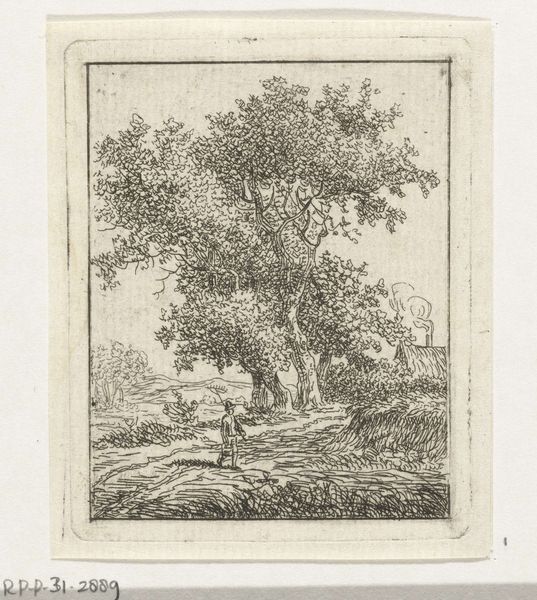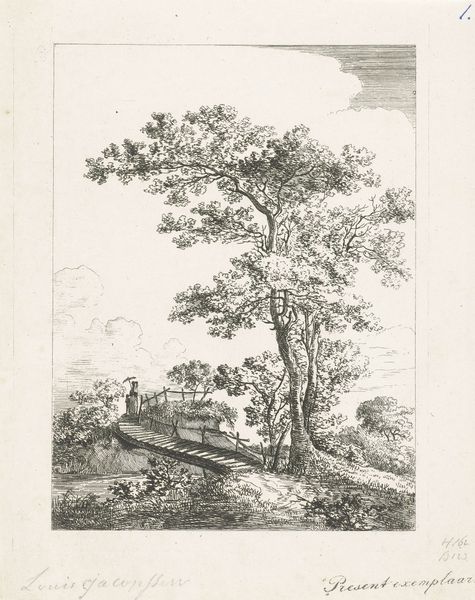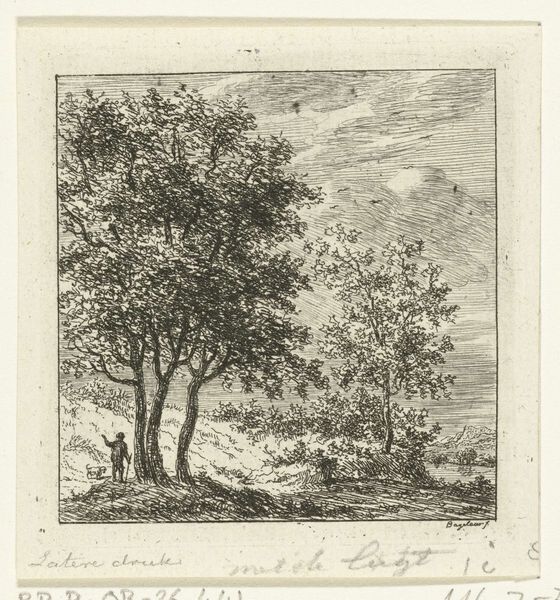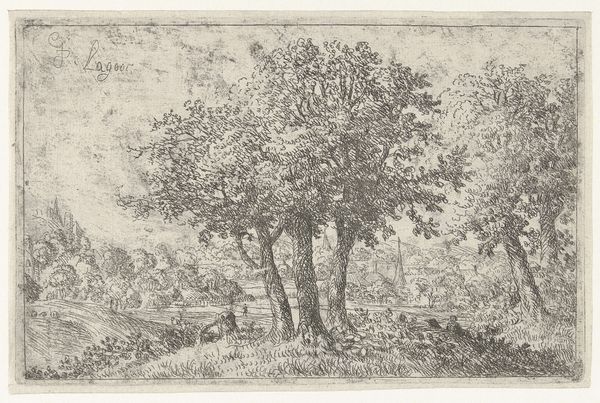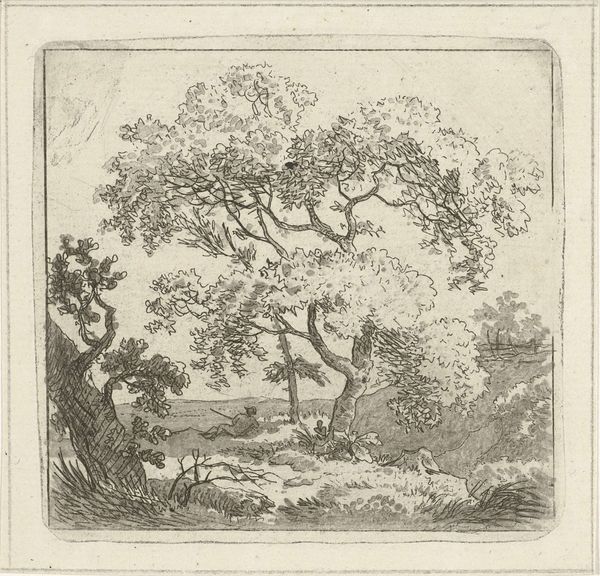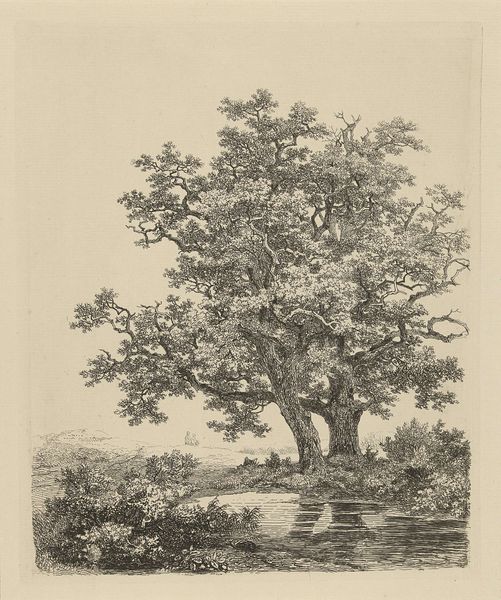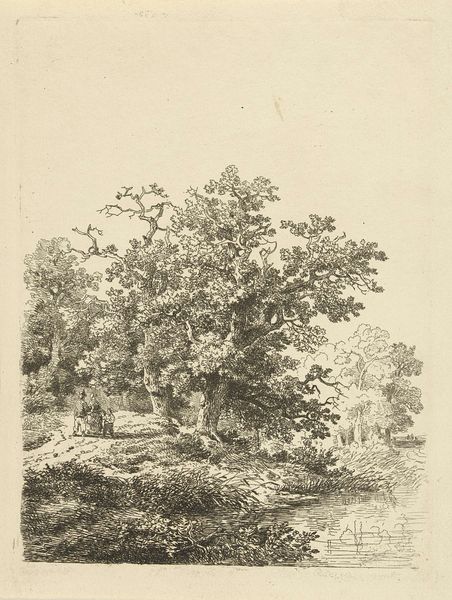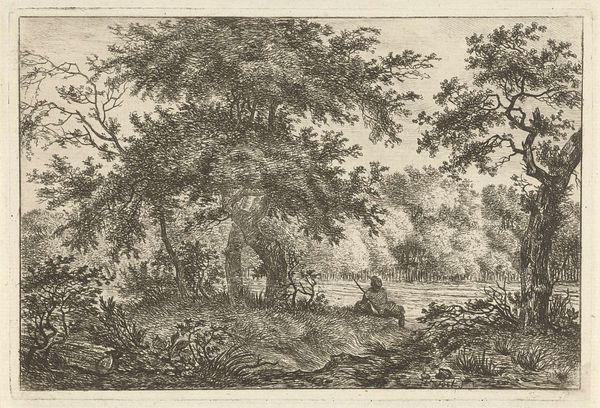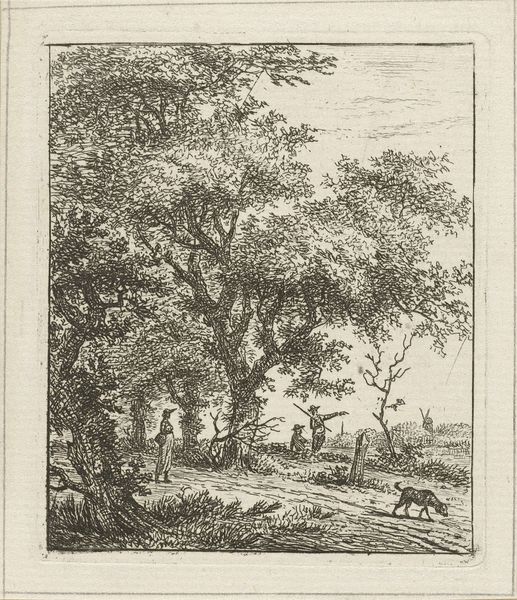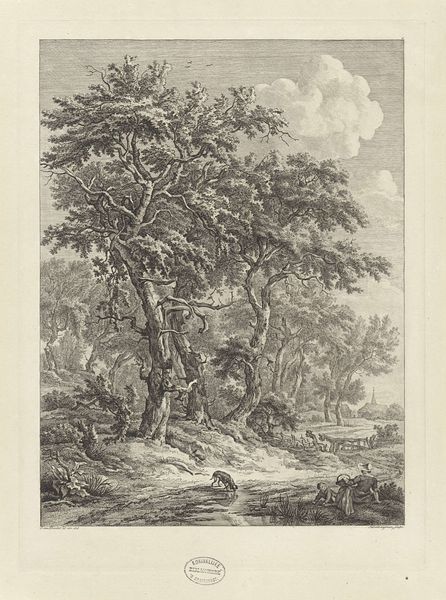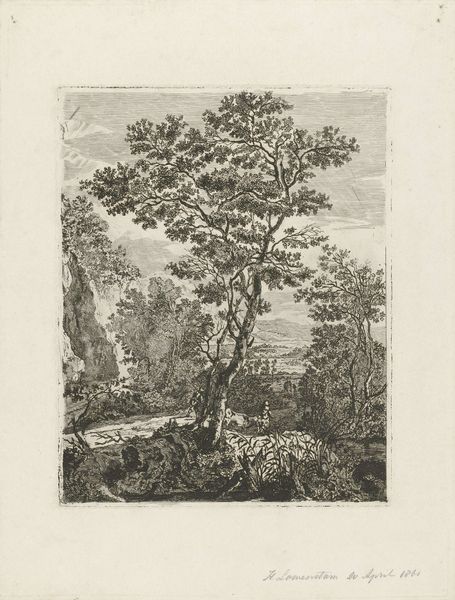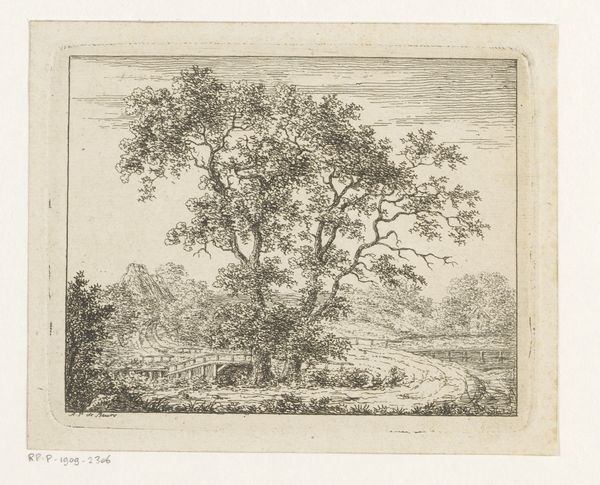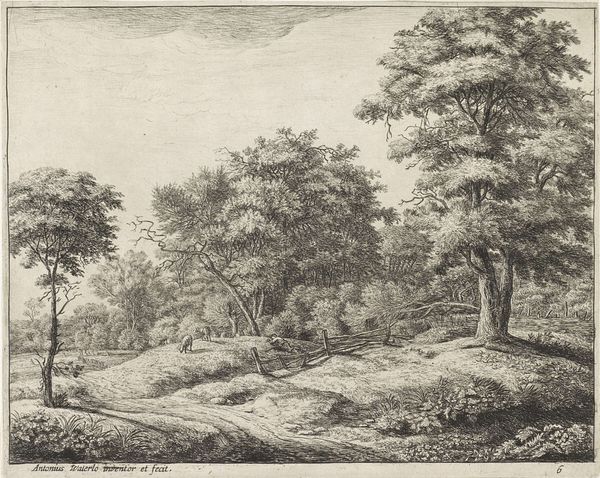
print, etching
# print
#
etching
#
old engraving style
#
landscape
#
romanticism
#
genre-painting
Dimensions: height 83 mm, width 70 mm
Copyright: Rijks Museum: Open Domain
Editor: We’re looking at Hermanus Fock’s “Landscape with Man with Jug,” an etching dating from between 1781 and 1822, here at the Rijksmuseum. There’s something so delicate and pensive about this print. What feelings or ideas does it stir in you? Curator: It's funny, it reminds me of leafing through old storybooks when I was a child. There's a wistful quality to it, like a half-remembered dream of a simpler time. The way the artist uses etching to capture light filtering through the leaves makes the landscape feel so alive. It almost vibrates. What do you notice about the man in the scene? Editor: I noticed him immediately. He's so small, almost disappearing into the landscape, with his jug and resting. It gives him a sense of peaceful belonging. Curator: Absolutely. And that interplay between the figure and the immensity of nature is so typical of Romanticism, don't you think? The smallness of man against the grandeur of the world, a little bit lonely but still very intimate. I wonder if Fock meant the jug to represent something more… sustenance, or maybe just a reminder of everyday life? What do you reckon? Editor: Perhaps. It grounds the entire idyllic vision. It makes the landscape somewhere habitable, not just beautiful. It isn't as obviously picturesque. Curator: Exactly! It pulls the sublime down to earth. And that tension makes the image, for me, so very interesting. We all bring our own “jugs,” don't we, to whatever landscape we find ourselves in. What sticks with you the most? Editor: I’ll be thinking about how much stories can be found within these old engravings and etchings! Curator: Yes, each line etched with ink unfolds into entire narratives! A testament to how much our minds love to build stories.
Comments
No comments
Be the first to comment and join the conversation on the ultimate creative platform.
